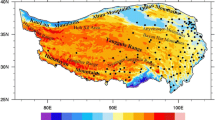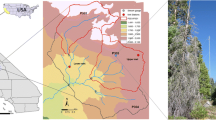Summary
The predicted global warming is supposed to have an enhanced effect on the arctic regions. How this will influence the water, carbon dioxide and methane balances in the European arctic tundra is the objective of the EU-funded project “Understanding Land Surface Physical Processes in the Arctic” (LAPP), to which where SINTEF is one of several contributors. The snow cover is one of the limiting factors for these exchange processes and knowledge of how it behaves and will behave under a different climate is important. Data collected for water and energy balance studies in an area close to Ny-Ålesund at 79°N at Svalbard are the basis of this study. Measurements during the ablation periods since 1992 show an average air temperature for the periods of 2.1 °C, an average incoming shorwave radiation of 230 W/m2 and an average measured runoff intensity of 14 mm/day with a maximum of 68 mm/day. Three models of different complexity are tested in order to simulate the water and energy balance of a snow cover on the arctic tundra. The three models are: a complex numerical model (CROCUS), a simple energy balance model and a temperature index model. The simulations were carried out for the melt periods in 1992 and 1996 as these two periods represent very different meteorological conditions. The results of these simulations exposed weaknesses in all the models. The energy balance model lacks calculation of cold content in the snowpack. This influences both the outgoing longwave radiation and the timing of the melt. Due to the effect of compensating errors in the simulations, CROCUS performed better than the simple energy balance model but also this model has problems with the simulation of outgoing longwave radiation. The temperature index model does not perform well for snowmelt studies in regions were radiation is the main driving energy source for the melt.
Similar content being viewed by others
Author information
Authors and Affiliations
Additional information
Received September 28, 1999 Revised September 18, 2000
Rights and permissions
About this article
Cite this article
Bruland, O., Maréchal, D., Sand, K. et al. Energy and water balance studies of a snow cover during snowmelt period at a high arctic site. Theor Appl Climatol 70, 53–63 (2001). https://doi.org/10.1007/s007040170005
Issue Date:
DOI: https://doi.org/10.1007/s007040170005




